
They are adorable little balls of fur.
Keyword: little. We don’t want them to become big fluffballs.
That will have a negative effect on their physical and mental health.
Just as with humans, that means a healthy diet and plenty of chinchilla exercise.
How much exercise? And what type of exercise is best for a chinchilla?
Keep reading to learn everything you need to know. We will answer all possible questions and also touch on a popular exercise toy that can actually be quite dangerous.
Contents
- 1 Chinchilla Exercise
- 2 How Much Exercise Do Chinchillas Need: Final Thoughts
Chinchilla Exercise
Without exercise, your chinchilla is at risk for obesity, joint issues, and numerous other health problems. It could also get bored and depressed.
There are multiple ways to exercise your chinchilla. Add plenty of toys and a running wheel to its cage. Also, you can let your chinchilla out of its cage in a safe playpen or enclosure where it can run and play with the other chinchillas.
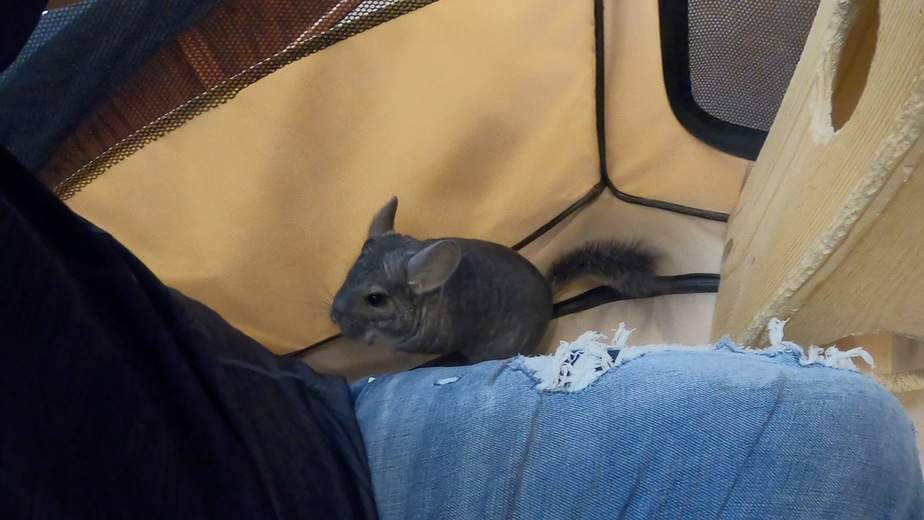
Let’s take a closer look at the best ways to get your pet some exercise. Below that, we will also address a popular toy that is actually quite dangerous for a chinchilla.
Different Ways To Exercise Your Chinchilla
Your chinchilla needs to do the exercise itself, but it is up to us as owners to provide them plenty of opportunities to do so. Here are the best ways to do that.
Daily Time Outside The Cage
Chinchillas need time outside the cage every day. You should aim to give your pet at least one hour of playtime. Not only does this provide an opportunity to exercise, but it also gives your pet time to socialize with you. This is vital for its mental well-being.
Ensure that the space is free of potential hazards, such as electrical cords, small objects, and gaps where your chinchilla could get stuck. I like to use a dedicated playpen for this. This article reviews the best models including the one I use (the first one). It is large enough that I and my son can get inside with our chinchilla and enjoy playtime together.
Again, do note that chinchillas have a tendency to overheat in the warmer months, so it’s important to maintain a suitable temperature in whatever space you allow your pet to be outside. And, of course, keep it away from direct sunlight.
Always supervise your chinchilla while it’s out of its cage to prevent accidents and ensure its safety. Gradually increase the playtime duration as your chinchilla becomes more accustomed to being out of the cage, but take care not to overexert it.
Provide An Exercise Wheel
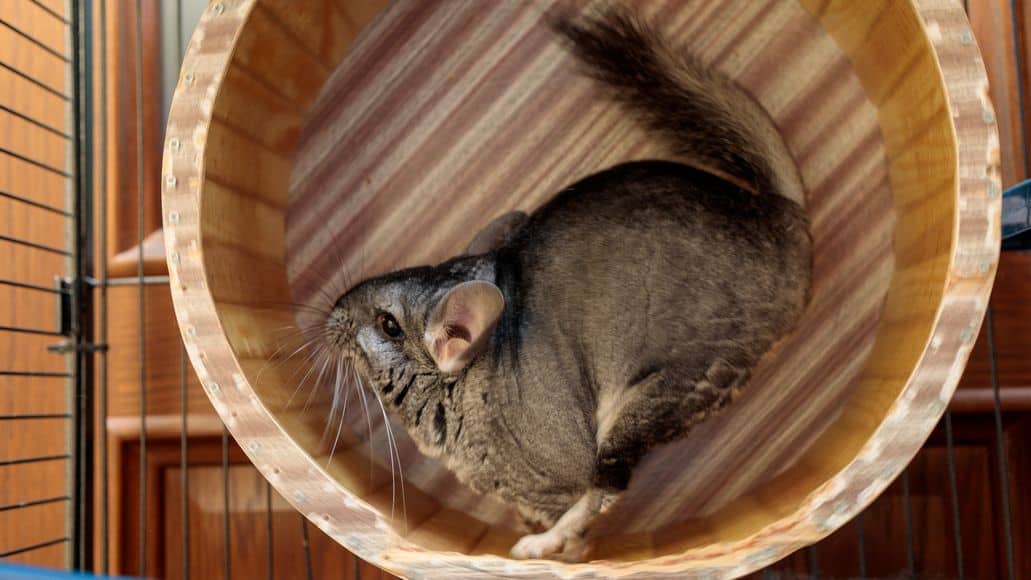
A safe exercise wheel is a great tool to help your chinchilla needs to get all the exercise it needs. Exercise balls are not good for chinchillas, because they are enclosed and can easily lead to overheating.
When choosing and adding an exercise wheel to a chinchilla enclosure, you want to make sure the wheel is safe. To that end, bear the following points in mind.
- Ensure that the wheel has a continuous surface (i.e. not spaced bars), sop that there is no danger of trapping your pet’s paws or tail.
- Make sure the exercise wheelis at least 8 to 10 inches in diameter. Avoid smaller wheels, because they could cause back issues in your chinchilla.
- If you have a pregnant chinchilla, remove the exercise wheel temporarily, because she might lose interest in nursing her kits. Also, baby chinchillas could try climbing and crowding on the wheel all at once, leading to the risk of injury.
Provide Places To Climb
In the wild, chinchillas love to climb, and the activity can help them build muscles, burn calories, and also lose excess weight. Add some ladders, perches, hammocks, ramps, and hanging toys to your pet’s enclosure.
Make sure they are safe and without sharp edges or plastic components. The gaps should not trap your pet.
Of course, you should also make sure you provide your chinchilla with a high quality cage that is large enough that it can move around a lot. This article covers how big a chinchilla cage should be.
Provide Toys
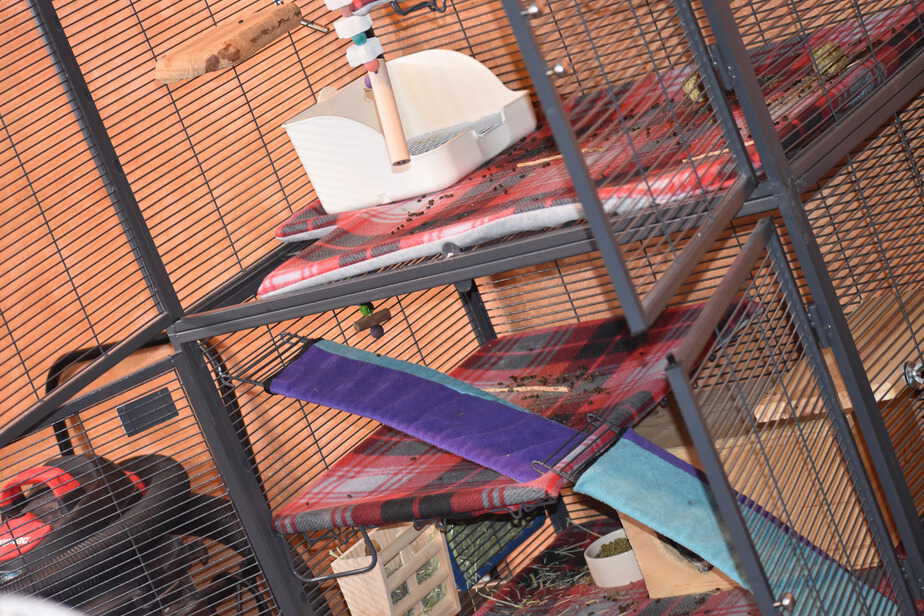
Chinchilla toys are great tools for exercise, and they also mentally stimulate your pet. Here are some ideas:
- Rope Toys: Choose sisal rope toys and hang them inside the cage. Your pet will love climbing on them.
- Homemade toys: You could always buy readymade chinchilla toys, but you can also make DIY toys from cardboard boxes and toilet rolls. They are sure to delight your chinchilla, and it will love to chew on them. Make sure there are no chemicals or prints on the cardboard.
- Woods and twigs: provide chew sticks and wooden blocks for your pet to chew and shred. This will provide exercise for their jaws and help them wear their teeth down.
- Tin cans without sharp edges: provide these for your chinchilla to roll in or hide inside.
- Boxes with multiple openings: your chinchillas will use these as tunnels and navigate in and out of them. You can also build a maze to challenge your pet.
What Is The Best Exercise For A Chinchilla?
The best way to exercise your chinchilla is to let it out of its cage for 1 to 2 hours daily. Encourage your chinchilla to bounce, roll, climb, jump, and move about.
You can also add a treadwheel, or a small pet running wheel, inside its cage. Provide plenty of wooden blocks, rope toys, hammocks, and perches inside the cage. That way, your pet can run and play whenever it wants.
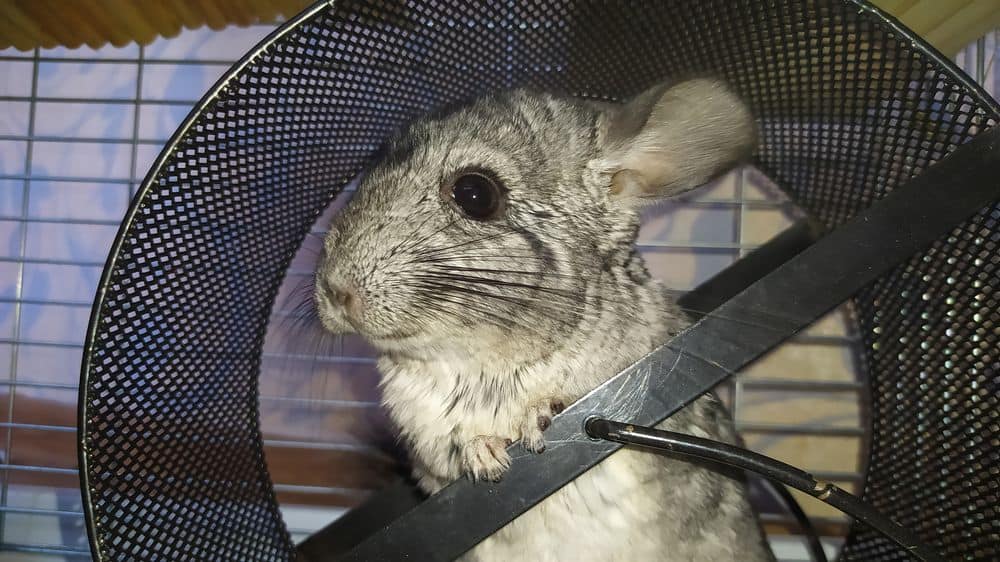
How Long Should I Let My Chinchilla Out?
When letting your chinchilla out of its cage for playtime, aim for at least 30 minutes to an hour of supervised playtime in a safe and enclosed area. As mentioned, I would shoot for an hour or two. This will allow your chinchilla to stretch its legs, explore, and engage in running and exploring.
Do Chinchillas Like Exercise Balls?
Most chinchillas love exercise balls and running wheels since they allow them to engage in the same physical activities as they do in the wild – running, climbing, and jumping.
But, while exercise wheels are great, exercise balls are not good toys for chinchillas. As mentioned above, the big problem with exercise balls is that they are enclosed.
With their dense fur, chinchillas are equipped to survive in the cool and dry climate of the Andes. That fur also means they are prone to overheating in warmer temperatures. That is why you need to keep the temperature and humidity low and
Inside an enclosed exercise ball, there is not enough airflow to keep a chinchilla cool while it is running. It can quickly get too hot and suffer heat stroke.
Another potential issue is that chinchillas poop and pee a lot. There is a good chance they might relieve themselves while in the exercise ball and then continue running. You can imagine the results.
Can I Take My Chinchilla For A Walk?
No, you should not to walk a chinchilla and especially not to use leashes, harnesses, or collars for the purpose. It simply isn’t safe, and many things could go wrong when you walk your chinchilla.
It could escape or fall prey to predatory animals. Also, they are extremely sensitive animals, and the unfamiliar outdoor environment, noises, and potential predators could cause stress and anxiety for them. They could also easily get frightened and try to escape from their harness or leash, which could result in injury.
And again, chinchillas have very dense fur that helps regulate their body temperature in their native, cool, high-altitude environment. Exposing them to warmer temperatures and direct sunlight, even for short periods, could easily cause them to overheat and suffer from heatstroke, which can be fatal.
The best way to exercise your chinchilla is by providing it with a safe playpen or giving it an exercise wheel inside its cage. Ideally, do both of these things.
How Do You Help A Bored Chinchilla?
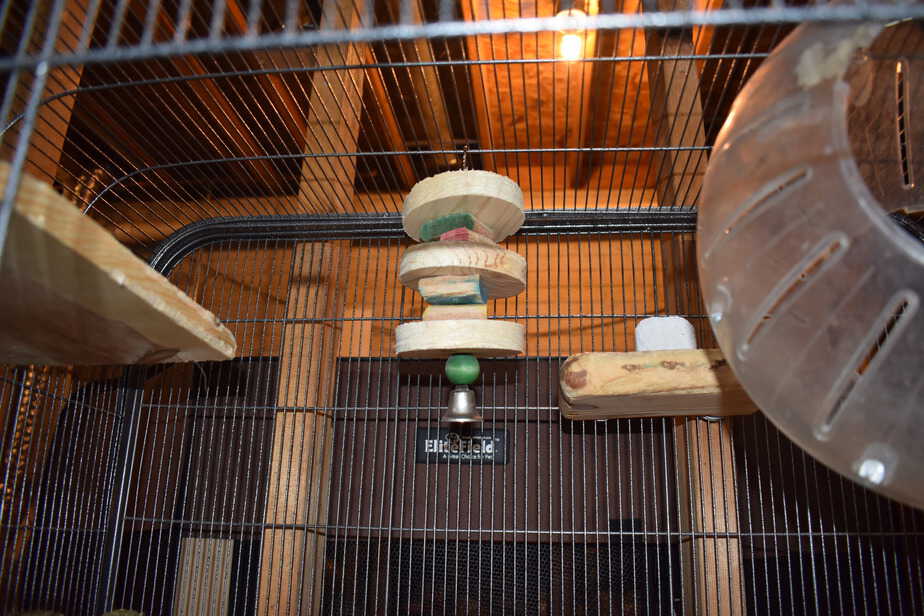
To help a bored chinchilla, provide a variety of chew toys, climbing structures, and hiding spots within its cage. Rotate toys regularly to keep things interesting.
Set up a secure playpen for supervised out-of-cage playtime where your chinchilla can explore new environments. Engage in interactive activities like offering treats and spending time with your buddy. Mental stimulation and physical activities will keep your chinchilla entertained and prevent boredom.
How Much Exercise Do Chinchillas Need: Final Thoughts
Chinchillas need at least 30 minutes, but ideally an hour or two, of playtime outside the cage every day. This provides the opportunity to run, jump and climb and it also satisfies their need for social interaction.
In addition to that, you should give your pet plenty of opportunities to get exercise inside its cage as well. This means a large enough cage with plenty of vertical space filled with ledges and ramps, lots of fun toys, and an exercise wheel.
Leave a Reply